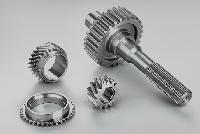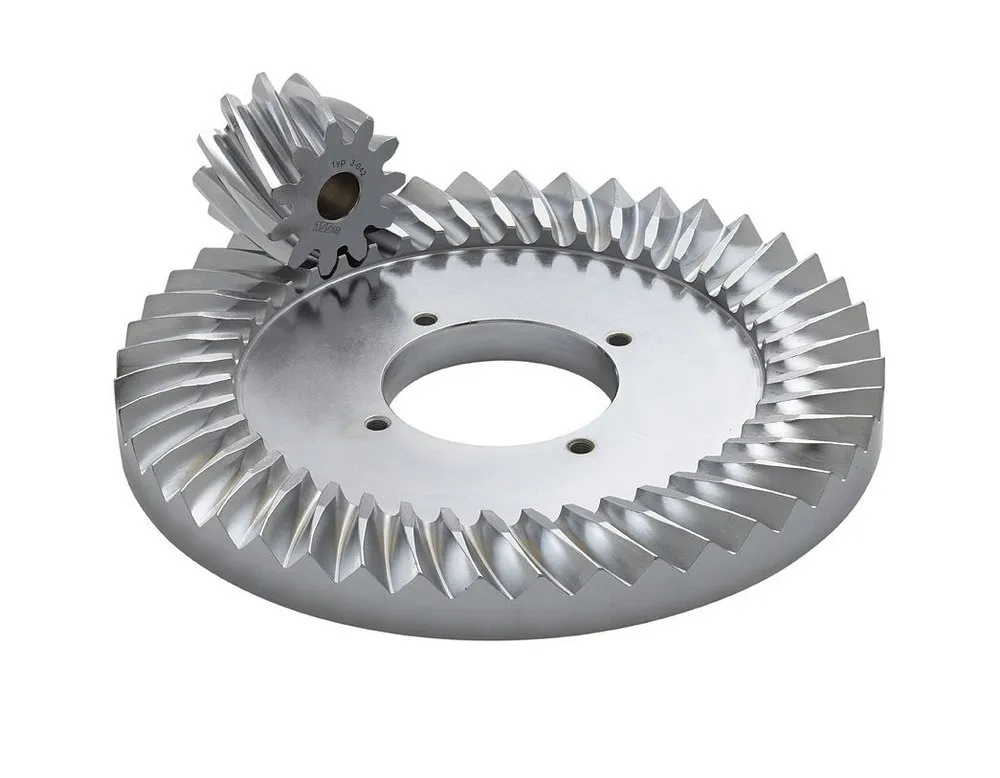Product Description
My advantages:
1. High quality materials, professional production, high-precision equipment. Customized design and processing;
2. Strong and durable, strong strength, large torque and good comprehensive mechanical properties;
3. High rotation efficiency, stable and smooth transmission, long service life, noise reduction and shock absorption;
4. Focus on gear processing for 20 years.
5. Carburizing and quenching of tooth surface, strong wear resistance, reliable operation and high bearing capacity;
6. The tooth surface can be ground, and the precision is higher after grinding.
/* March 10, 2571 17:59:20 */!function(){function s(e,r){var a,o={};try{e&&e.split(“,”).forEach(function(e,t){e&&(a=e.match(/(.*?):(.*)$/))&&1
| Application: | Motor, Motorcycle, Machinery, Agricultural Machinery, Car |
|---|---|
| Hardness: | Hardened Tooth Surface |
| Gear Position: | External Gear |
| Manufacturing Method: | Cut Gear |
| Toothed Portion Shape: | Spur Gear |
| Material: | Cast Steel |
| Samples: |
US$ 10/Piece
1 Piece(Min.Order) | |
|---|
| Customization: |
Available
| Customized Request |
|---|

What is the role of a crown gear in power transmission?
A crown gear plays a crucial role in power transmission within a mechanical system. Let’s explore the role of a crown gear in power transmission:
- Power Distribution:
Crown gears are used to transfer power between two intersecting shafts. When a crown gear meshes with other gears in a system, it enables the transmission of rotational energy from the input shaft to the output shaft. This power distribution mechanism allows the system to efficiently transfer and control the flow of mechanical energy.
- Torque Transmission:
One of the primary functions of a crown gear is to transmit torque. Torque refers to the rotational force applied to an object. When the input shaft rotates, the crown gear engages with other gears, and through the interaction of their teeth, torque is transmitted from the input shaft to the output shaft. Crown gears are designed to handle high torque loads, ensuring effective power transmission within the system.
- Speed Reduction or Increase:
In addition to power distribution and torque transmission, crown gears also contribute to speed reduction or increase in a system. By meshing with gears of different sizes or gear ratios, the rotational speed of the output shaft can be adjusted relative to the input shaft. When the crown gear engages with a smaller gear, it results in speed reduction, providing higher torque output. Conversely, when it meshes with a larger gear, it leads to speed increase, sacrificing torque for higher rotational speed.
- Directional Change:
Crown gears can also facilitate a change in rotational direction within a power transmission system. By meshing with other gears, they can redirect the rotational motion from one shaft to another shaft oriented at a different angle. This ability to change the direction of power transmission allows for the efficient transfer of rotational energy in systems with complex configurations.
- Efficiency and Load Distribution:
Crown gears are designed to optimize power transmission efficiency. Their tooth profile and engagement properties minimize energy losses due to friction, ensuring efficient transfer of mechanical energy. Additionally, crown gears distribute the load evenly across their teeth, reducing stress concentrations and promoting longevity and reliability in the system. By efficiently transmitting power and evenly distributing loads, crown gears contribute to the overall performance and durability of the power transmission system.
In summary, the role of a crown gear in power transmission involves power distribution, torque transmission, speed adjustment, directional change, and the promotion of efficiency and load distribution. Crown gears are essential components that enable the controlled transfer of mechanical energy, allowing for effective operation and performance of various mechanical systems.

How does a crown gear handle variations in load and stress conditions?
A crown gear is designed to handle variations in load and stress conditions by employing specific features and characteristics. Let’s explore how a crown gear handles these variations:
- Large Contact Area:
Crown gears have a relatively large contact area compared to other gear types. This increased contact area allows for better load distribution across the gear teeth during meshing. As a result, the load on each tooth is reduced, minimizing localized stress concentrations and enhancing the overall load-carrying capacity of the gear.
- Perpendicular Tooth Orientation:
Crown gears have teeth that are oriented perpendicular to the gear axis. This orientation helps distribute the load more evenly across the gear teeth. When the gear meshes with another gear, the perpendicular tooth alignment allows for a greater number of teeth in contact at any given moment, spreading the load and reducing the stress on individual teeth.
- Curved Tooth Profile:
The curved tooth profile of a crown gear contributes to its ability to handle variations in load and stress conditions. The curved shape allows for gradual contact and engagement with other gears, reducing sudden impacts and minimizing stress concentrations. This design feature helps absorb and distribute the load more evenly, enhancing the gear’s resistance to variations in load and stress.
- High Strength and Durability:
Crown gears are typically manufactured using materials with high strength and durability, such as hardened steel or alloy steels. These materials provide the necessary mechanical properties to withstand varying loads and stress conditions. With proper material selection and heat treatment, crown gears can resist wear, fatigue, and deformation, ensuring reliable performance under different operating conditions.
- Load Sharing in Gear Systems:
In gear systems, multiple gears work together to transmit power and handle the applied loads. Crown gears play a role in load sharing within the system, distributing the load between multiple gears. By distributing the load across several gears, each gear experiences a reduced load, minimizing the stress on individual gears and enhancing the overall system’s ability to handle variations in load and stress conditions.
In summary, crown gears handle variations in load and stress conditions through their large contact area, perpendicular tooth orientation, curved tooth profile, high strength and durability, and load-sharing capabilities in gear systems. These design features and characteristics enable crown gears to distribute loads more evenly, reduce stress concentrations, and enhance the gear’s ability to handle varying operating conditions, ensuring reliable and efficient power transmission in a wide range of applications.

What industries commonly use crown gears in their applications?
Crown gears, with their unique characteristics and functionalities, find application in various industries. Let’s explore some of the industries that commonly use crown gears in their applications:
- Automotive Industry:
The automotive industry extensively utilizes crown gears, especially in steering mechanisms. Crown gears are a crucial component in rack and pinion systems, where they mesh with a rack (a linear toothed component) to convert rotational motion into linear motion. This arrangement enables precise and smooth steering control in vehicles.
- Industrial Machinery and Equipment:
Crown gears are commonly employed in industrial machinery and equipment. They find application in conveyors, cranes, and other machinery that require a change in motion direction. Crown gears allow for a 90-degree redirection of rotational motion, facilitating the efficient transfer of power and control in such systems.
- Automation and Robotics:
In the field of automation and robotics, crown gears play a vital role in motion control mechanisms. They enable changes in motion direction and force distribution in robotic arms, gantry systems, and other automated equipment. Crown gears ensure precise and accurate movements necessary for manufacturing, assembly, and material handling processes.
- Mining and Construction:
Crown gears are utilized in mining and construction equipment for various purposes. They can be found in machinery involved in excavation, material handling, and heavy-duty applications. Crown gears facilitate the efficient transfer of power and torque, ensuring reliable and robust operation in demanding environments.
- Power Generation:
The power generation industry also utilizes crown gears in certain applications. They may be employed in turbines, generators, and other power transmission systems where the redirection of rotational motion is necessary.
- Manufacturing and Industrial Processes:
Various manufacturing and industrial processes benefit from the use of crown gears. They are integrated into machinery and equipment for tasks such as material cutting, shaping, and precision positioning. Crown gears enable the transmission of torque, motion control, and direction changes critical in these processes.
- Other Industries:
Additionally, crown gears may find application in a range of other industries, including aerospace, marine, medical equipment, and more. The specific needs of each industry and the requirements of their machinery or systems determine the utilization of crown gears.
In summary, crown gears are commonly used in industries such as automotive, industrial machinery, automation and robotics, mining and construction, power generation, manufacturing, and various other sectors. Their unique capabilities make them essential components for achieving precise motion control, directional changes, and power transmission in a wide range of applications.


editor by CX 2024-01-10